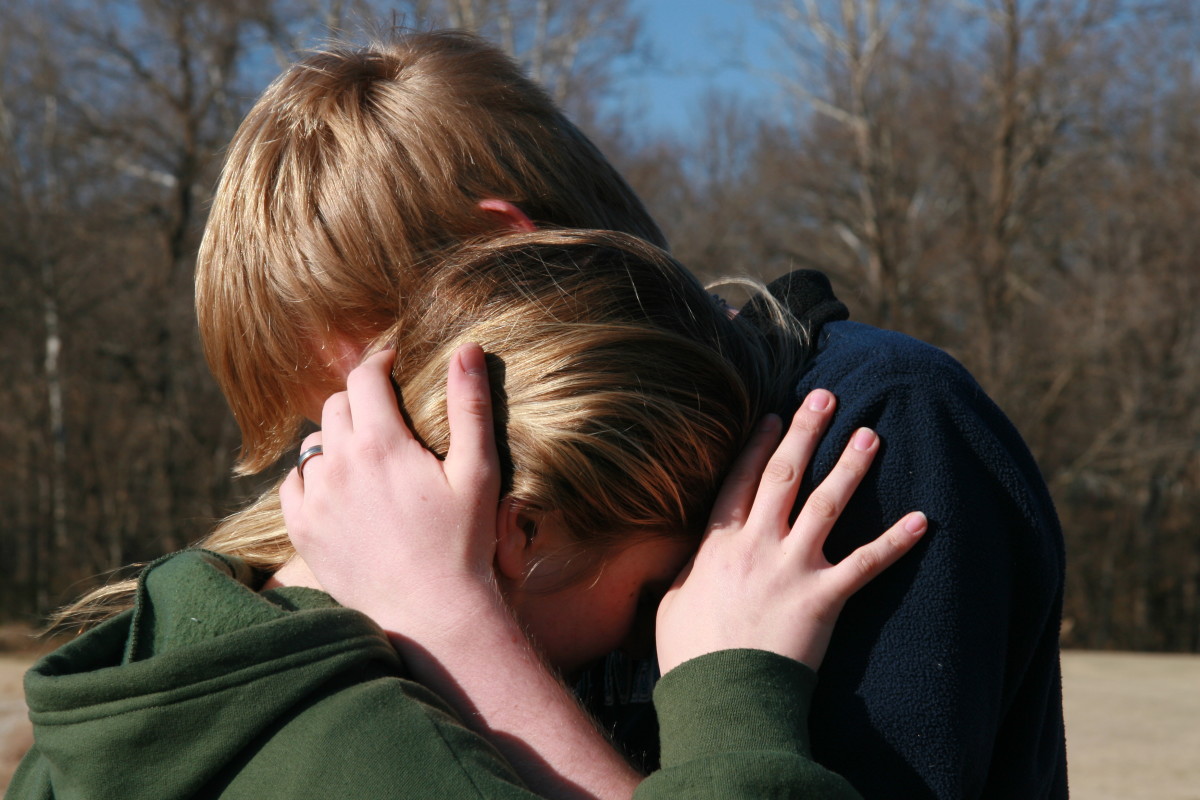- HubPages»
- Family and Parenting»
- Parenting Skills, Styles & Advice»
- Parenting Advice & Tips
Patty's July Newsletter (edited 2017)
Kids Color Silhouettes

The Quality, the Content, & Patterning of Behaviors
Siblings: Love, Envy, & Understanding by Carol & Judy Dunn (l982) conducted a study of 40 families of mothers pregnant with a first born, some with more than one child interacted together in an area of close proximity in Cambridge, Mass. Living amongst their neighbors and bringing up their children the study was completed to find out how well the families fared. The behavior patterns of mothers and infants, mothers and first-borns, mothers and second siblings, and fathers with the same showed some striking similarities.
The study was conducted at four different intervals: two- before the birth of the baby, and two after at eight months and then fourteen months. Mothers who breast-fed their infant found they have a better interaction with their first-born than bottle-fed babies because siblings were more affectionate with seeing how the mother and baby were feeling toward each other. Mothers who bottle-fed their child noticed the siblings disrupted the household more to receive attention, causing the mother to get up and interact with that child(ren).
Mothers' affection with infant when each were tired or depressed caused a disruption in temperament. Generally, this occurred with the pregnancy of the second-born, while the first-born was alone, at least the first three weeks after the birth of the baby. During these situations, temperament played a very distinctive role when interacting together. From the study, the distinctive behaviors were categorized by measures of child's internal and external mechanisations.
Mothers who were present most times of the day kept guessing about their children's activities at a minimum. With less to worry about, this presence continued after the birth of the baby. Grandparents and neighbors also helped with the daily care of the older siblings.
In the manner of family interaction, mothers were the most important. This is because mothers set the timetable of how the other children helped or withdrew from the infant. Fathers were especially helpful in some instances caring for the first-born and other siblings while mothers took full control nurturing their babies. The authors Dunn & Dunn (l982) were concerned with developmental changes. Developmental changes of affection, jealousy, and ambivalence as a result of parent's interaction with the infant were sibling rivalry.
Mother Is Reading a Book for Her Baby
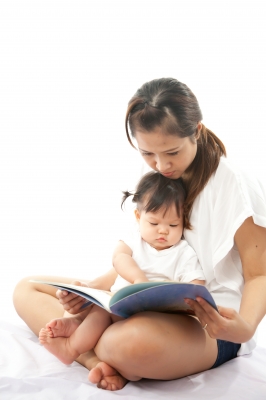
Mothers Who Communicate With Their Infants
Mothers who love to communicate with their infants do so by their high pitched voices. Mothers raise their voice to draw attention to words and gestures that baby response to while observing, feeding, or playing with infant. Mothers communicating with their infant wants baby to reciprocate with coos or aahs so that a developmental change takes place.
Mothers intend for babies to know what they are saying and use short, clear, and grammatical speech emphasizing a return of verbalizing from baby. Instances where mother and infant have arrived at a simultaneously over-zealous intimate conversation and interaction, not only is the baby preoccupied and happy, a teaching and learning experience has occurred between the two. This experience is then systematized into the first-born watching and observing and taking in the various ways in which to communicate with the baby when time together alone. Sometimes when disruptions or negative interactions occur, the first-born will derive at a level of communication understood by him/her and the baby.
Language helps children interpret their environment and world. Mothers with non-verbal and verbal words communicate to keep the infant and child guessing about life's events. What's good about a spoon or why does “mommy” frown up her face when daddy is pretending? Questions that are directed to help the baby explore the things that are everyday experiences teach sociability traits that draw from interactions of mother with infant child. Affections are counter-cultural for all concerned when studying relationships in families. A contented relationship says several things. One important connotation of a positive relationship is when mother talks to her first-born about his/her new member of the family. Also, when fathers are not ignoring the first-born and giving all the attention to the baby. Siblings are less jealous of the mother/baby relationship because they try to help interpret the baby's wants and needs as well as comfort the baby when he is bothered by something.
Mothers by communicating with the baby helps the baby using the techniques of pointing, comforting, and teaching; what the other siblings are doing and saying. If the mother has problems dealing with the baby after pregnancy, it shows. The affection of the entire household is in turmoil because everyone is bothered, confused, or misunderstood. This confusion entails the kinds of behavior that makes a mother hate the situation. Infants can sense when mothers are having a bad day and they too will become irritable and moody. Then siblings who refuse to accept defeat by having a good relationship with mother and infant starts to carry around this guilt trip and misbehave.
When A Child Misbehaves Mothers Are The First To Discipline
Mothers in this community were the disciplinarians. Mainly due to the father's absence, and we all know how easy fathers have to say stop it once and the children stop doing what they are doing, mothers are stuck with punishing the children. Mothers have a better time disciplining girls than boys. Mothers and daughters are closer in their relationships than mothers with boys. It is the same-sex gender issue that seem to make this statement so true to its word. The mother and daughter relationships have more interests than mother and boys. Mothers lose tolerance when boys hit girls than when girls bother boys. This does not suggest that boys do not hold a parent's maternal instincts. Fathers who take the time to play with their first-born and second-born siblings gain children who respect their parents and give them the credit they deserve. Some father and daughter relationships are unique due to the mentality that comes from the initiation. And, it holds true that in times of trouble with mother and father, the mother often side with the boy for a supporting role, and the father the girl. This interaction keeps communication at bay between the couple until a resolution is reached. Turbulent interaction has a way of disrupting the mother, the first-born, and the infant just by perceiving that there's a problem.
Family Togetherness Shows Children And ParentsTogether Stock Photo
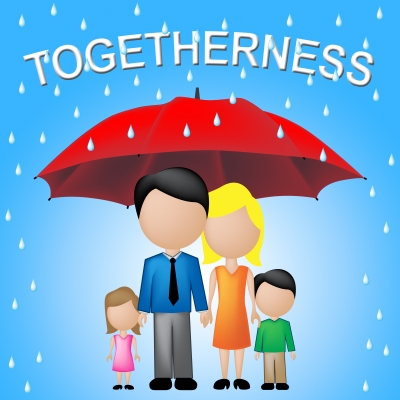
First-born With Mothers, Infants, Siblings, & Fathers
Most first-borns are interested about the new baby just arrived home from the hospital. The children who for some reason can not adjust to the newborn, oftentimes will not adjust later on when the baby is eight months to fourteen months. With a new member in the household, children do change, and mothers must be tactful keeping the family involved, letting the children see that the baby can be a fun sister or brother to have around.
The first-born with interest in the baby by observing mother and infant determines the intensity of the interaction with the newborn. If for some reason the first-born shows little or no interest in the baby during normal times but intervenes if baby is in danger, shows concern for his safety. Good vibes between siblings are reciprocated. If however, little interaction between the first-born and the baby or first-born and second sibling happens to be the case, then they generally are hostile toward the other most times. At different times they play together and at different times they fight. Affection and dislike happens to be the norm between first-born and second-born siblings.
A child who shows little or no emotion towards the baby considers he's too independent for his own good. Even when the baby gets upset and starts to cry, this child does not necessarily appease the baby's temperament; he's jealous and does not want to relinquish his crown of being the only child.
I Love You Mommy
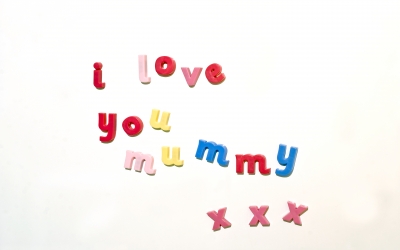
How Empathy Has A Distinct And Significant Affect On The Infant And Sibling
Infants can sense when mother is tired or depressed. Also, infants can perceive others' distress affecting it with their own experience. In some ways like when the infant can attest to his/her mother's voice among many other mother voices, they sense others as having inner states independently from their own. This feeling of how the other feels projects how they in turn will react. If for example, a little girl had ice cream and part of the ice cream fell to the ground and the little girl cried, an infant watching and start to suck her thumb has shown empathy toward the little girl's feeling sad because of her ice cream. The feeling and knowing of others inner states are partly a inbred trait learned from nonverbal and verbal talk.
Through observation, children like to empathize with the baby even when they know the baby has limitations. For example, this model of role reversal showed older children acting like the infant and acting out her/his likes and dislikes, her need for guidance, protection, and comfort for survival in times of emotional stress.
At the age of fourteen months, a toddler modeling a mother's distress can project her mother's needs and provide comfort to her from the way she normally comforts herself and baby such as a security blanket or a favorite teddy beer. If the older siblings are causing considerable harm by pestering or upsetting the toddler, could find toddler takes something of value from them that's upsetting. The same goes with game playing, the toddler in retaliation takes something from the older child. Naturalistic observation that a child sees, makes her/him pretty sure of knowing what to expect from his or her sibling, and is the assurance of feelings from mastering their new sibling's behavior.
On Intuition
“Intuition is not a sin.” Dunn & Dunn.
On Words
“Words were the weapons of last resort.”
On Gender of Siblings
Same-sex siblings are friendlier to their newborn sibling than different sex siblings.
Family Info-text Graphics and Arrangement Concept (word cloud) Stock Photo
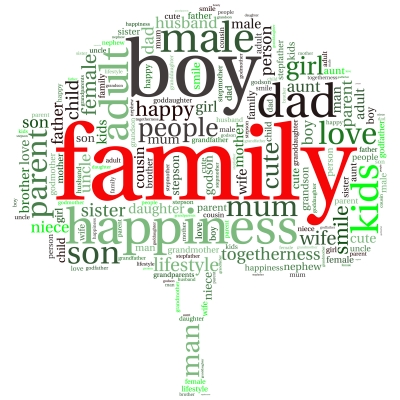
Mothers, Brothers, Sisters, & Infants
First-born siblings protest for the same kinds of attention from parents after the baby is born at fourteen months. First-born siblings wanted cuddling, talking, comforting, and playing games with mother the same as mother and infant. First-born siblings stayed to themselves when mother was interacting with baby. First-born and second sibling's problems were sleep and toilet training after the mother's pregnancy due to developing fears and phobias. At a certain age, siblings also held fears or worries that increased as infant progressed. These fears at three years were less emotional. The reaction of the siblings reached a better understanding of self and others once the fears dissipated. After four years of age the fears subsided.
“In play with siblings, the children can act as “comforters, teachers, as devious and manipulative bullies, or as sensitive companions who enter the play world of the other (213).
To reach an understanding of how a child, especially at the two and three year-old stage, can summon up the courage to go to the next level of cognitive behavior or developmental advance, not developmental delays that happen to be a symptom of ADHD in some studies, is from observation. The observation of mother and baby, sibling and baby, and how others act toward the baby and the environment, helps a child reach a consensus of his world.
Kids On The Move Stock Photo
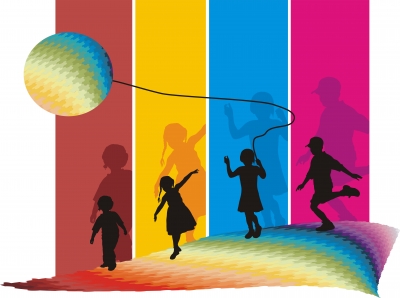
Fathers
Fathers have a way with children when playing and disciplining their children that is unique. Not even mentioning the gender issue, father and daughter relationships can be important for growth on levels of maturity and affection. Older siblings who are loving and caring toward the baby and show little or no jealousy have an easier time of accepting father and infant playing and spending time together. Fathers sharing time with infant and having no time left for the other siblings have to be careful because children will withdraw or not want to be present at all with the caring of the baby. A child displaying jealousy acts out this jealousy doing something outstanding so to get father to pay some attention to them.
A Set Of Happy Kids Stock Photo
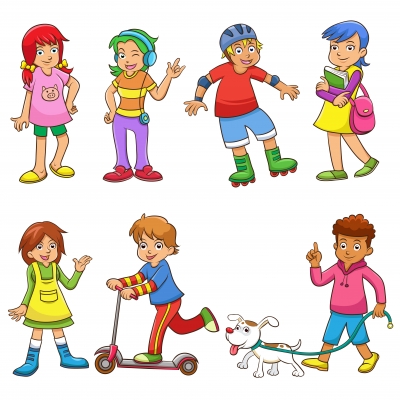
Sisters: Close And Distant Relationships
Sister relationships are based on proximity, age, and life events from Sistering: Power And Change In Female Relationships by Melanie L. Mauthner. What makes sisters close is marrying, bereavement, or death in the family. Sisters have close relationships and talk out, are intimate, and dependent on each other. Men do activities that may appear close, but the difference is more pronounced when sisters talk and do things together. The close relationships are present when sisters grow older and live together. If sisters live farther apart, the way to socialize and get back together is an effort, an endeavor that takes time. Childhood siblings and adult siblings are recognized for the complex roles because of the differences and separating of personalities and interests. These times are more pronounced to the public same as parent-child interactions. The question comes to the fore concerning the depth of sister relationships, sometimes known as “kinship ties”.
What basically is required for friends with sisters?
It has been repeatedly implicated that close relationships are not necessarily biological. Some of these close relationships are from best friendships.
On William Raspberry
“And while individual youngsters can manage life without fathers reasonably well in many cases, few are able to come unscathed through fatherless communities (a newspaper article on October 2005 with the State Journal Register).
© 2017 Patty Florence


